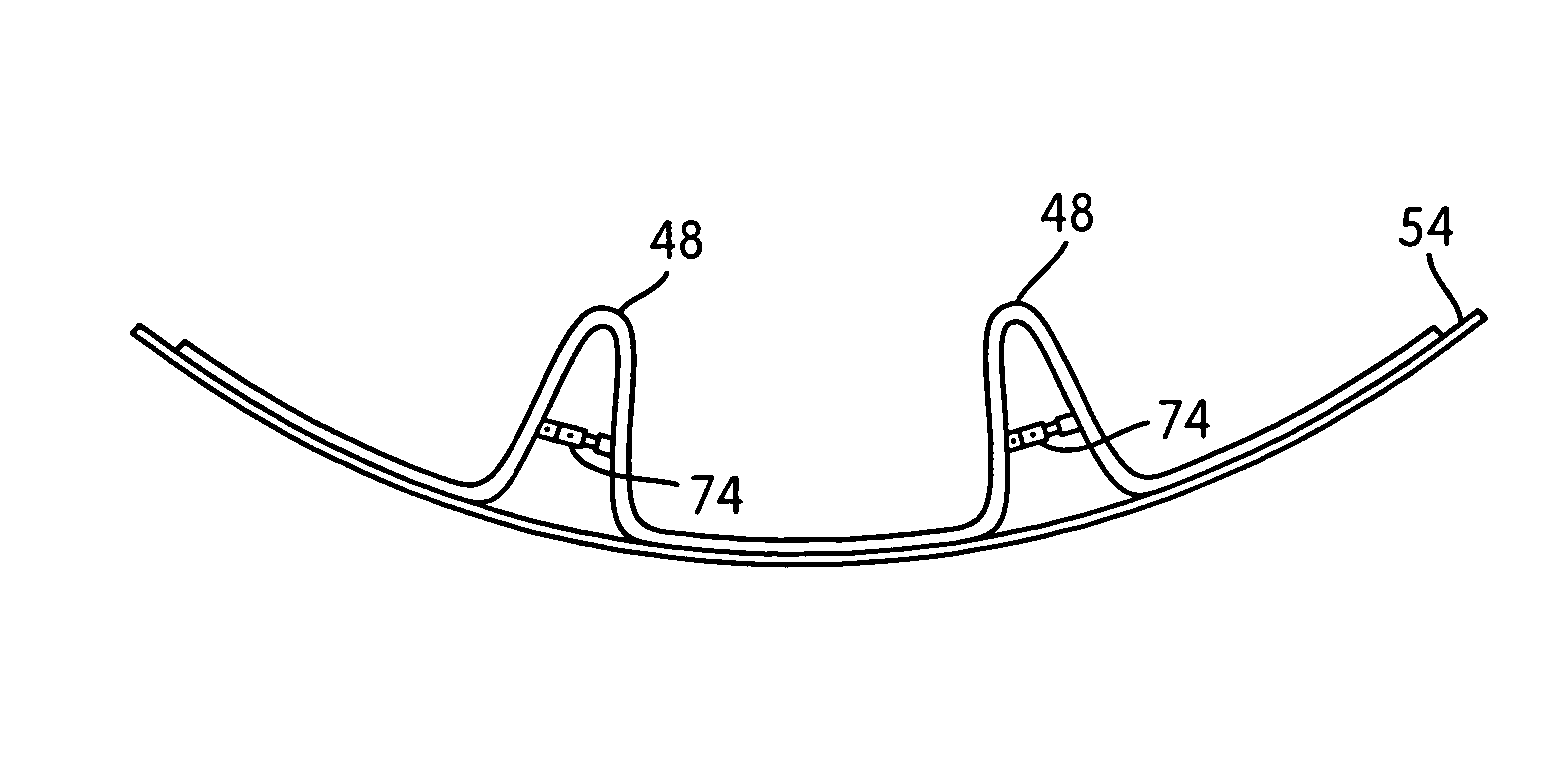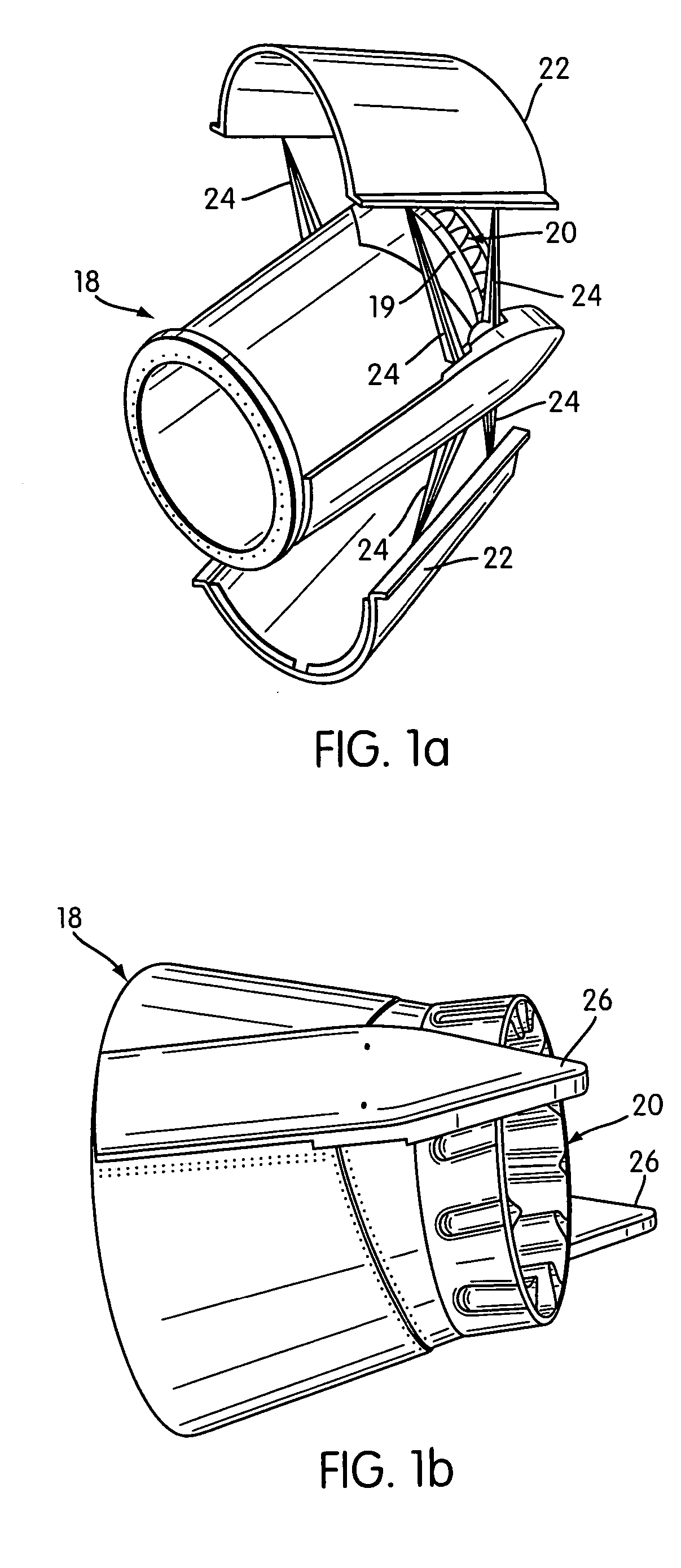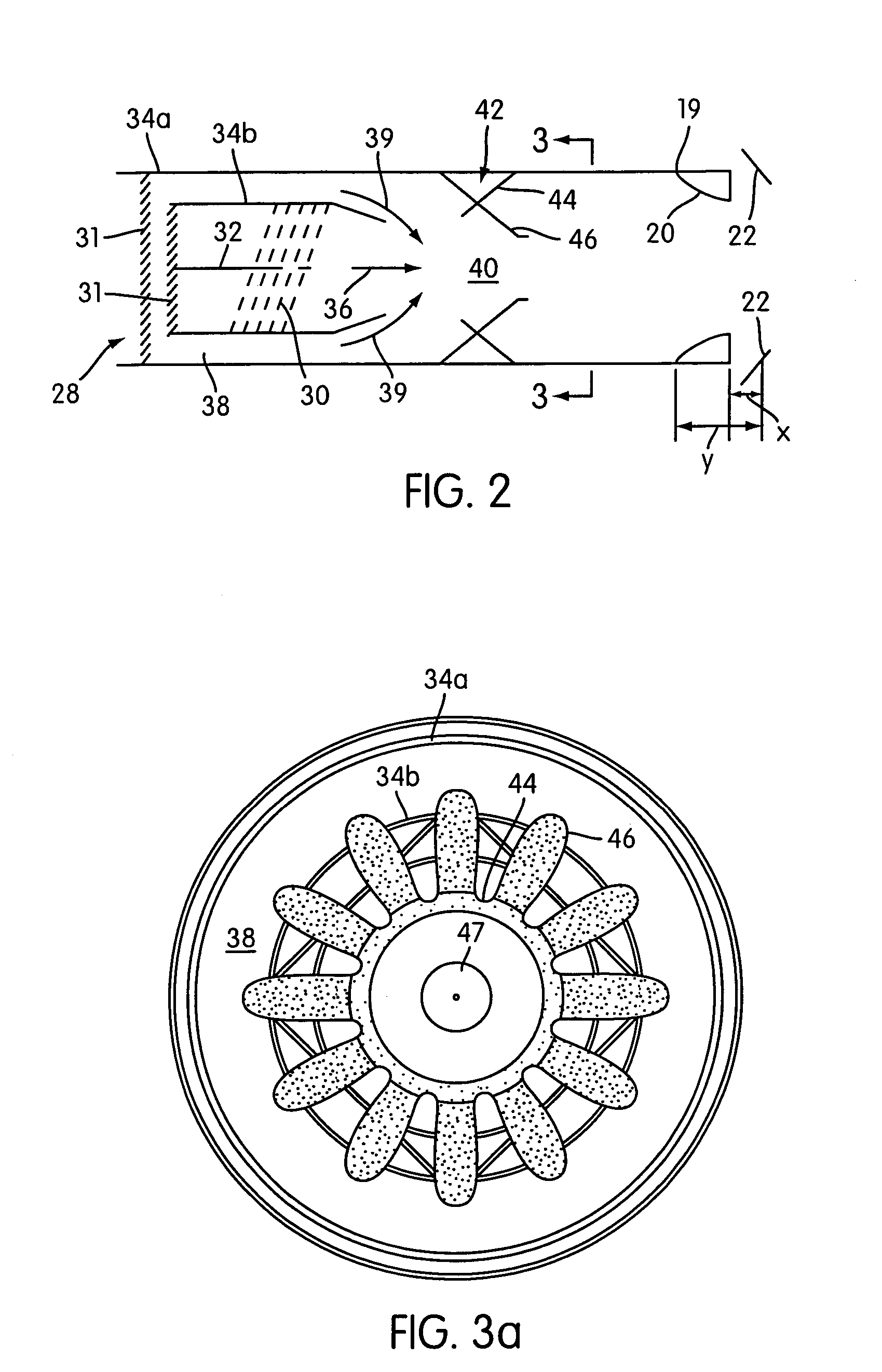Jet nozzle mixer
a technology of mixers and nozzles, which is applied in the direction of machines/engines, vessel construction, marine propulsion, etc., can solve the problems of impracticality and high cost of engine reconfiguration, difficult and expensive manufacturing of lobes, and high cost of mixers to be retrofitted to engines, so as to reduce noise
- Summary
- Abstract
- Description
- Claims
- Application Information
AI Technical Summary
Benefits of technology
Problems solved by technology
Method used
Image
Examples
Embodiment Construction
[0032]Because the present invention was devised particularly with respect to the Pratt & Whitney JT8D-217 / 219 Series engine, the following discussion will be directed specifically thereto; however, it is to be understood that the present invention is equally relevant for use in other jet engines and, therefore, is not to be limited to a specific jet engine.
[0033]Accordingly, FIGS. 1a and 1b illustrate a nozzle assembly 18 relating to, for example, a Pratt & Whitney JT8D-217 / 219 Series jet engine to which a jet nozzle mixer 20 as embraced by the present invention is attached at its exhaust terminus 19. Assembly 18 also supports a thrust reverser having a pair of thrust reverser buckets 22. The attachment of the thrust reverser buckets to assembly 20 is effected by bars 24 which are pivotally linked to a pair of diametrically opposed mechanisms housed within fairings 26, one of which is shown in FIG. 1. The fairings are secured at opposite sides of the assembly. The thrust reversers a...
PUM
 Login to View More
Login to View More Abstract
Description
Claims
Application Information
 Login to View More
Login to View More - R&D
- Intellectual Property
- Life Sciences
- Materials
- Tech Scout
- Unparalleled Data Quality
- Higher Quality Content
- 60% Fewer Hallucinations
Browse by: Latest US Patents, China's latest patents, Technical Efficacy Thesaurus, Application Domain, Technology Topic, Popular Technical Reports.
© 2025 PatSnap. All rights reserved.Legal|Privacy policy|Modern Slavery Act Transparency Statement|Sitemap|About US| Contact US: help@patsnap.com



